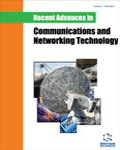Abstract
This paper presents the architecture, functionality, and field evaluation of a newly developed real-time advanced warning system using dedicated short range communication (DSRC) based vehicle-to-vehicle (V2V) communication without the need for a DSRC roadside unit to control the system operation. The developed system dynamically acquires important traffic parameters such as starting location of congestion (SLoC), ending location of congestion (ELoC) and travel time (TT), and provides useful traffic alerts in real time to improve drivers’ situational awareness. The newly developed system utilizes an ad-hoc host vehicle selected from among the DSRC equipped vehicles present on the road, to act as central controller for acquisition and dissemination of traffic parameters. The ad-hoc host is selected by detecting the deceleration speed profiles of several DSRC equipped vehicles that are about to enter the back-of-the-queue. The selected ad-hoc host then acquires a new set of traffic parameters, as well as broadcasts useful alerts to vehicles trailing far behind the back-of-thequeue. The algorithm presented here makes it fully adaptable to any congestion scenario whether due to a work zone, an incident, or due to regular rush hour traffic. The developed system is well suited for operational deployment, particularly during the initial phase of the DSRC market penetration, because it only needs 15- 25% of DSRC market penetration to acquire traffic parameters. The proposed system also incorporates DSRC equipped programmable changeable message signs (PCMSs) to convey the warning messages to non-DSRC equipped vehicles.
Keywords: Congestion, DSRC, DSRC market penetration, end-of-queue warning, freeway, intelligent transportation systems, onboard unit, PCMS, roadside unit, travel time, traffic management, V2V, work zone.
Graphical Abstract
 17
17

